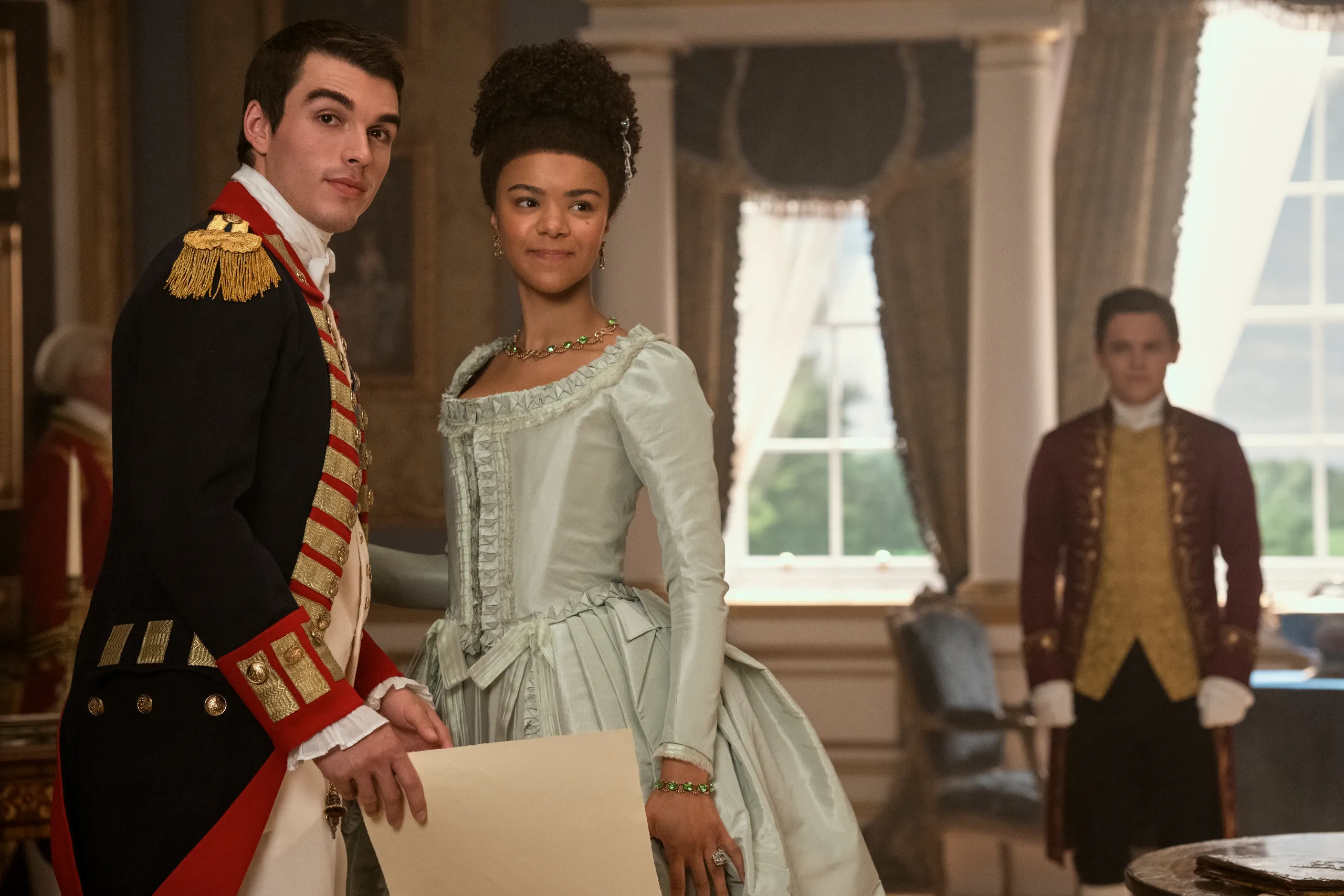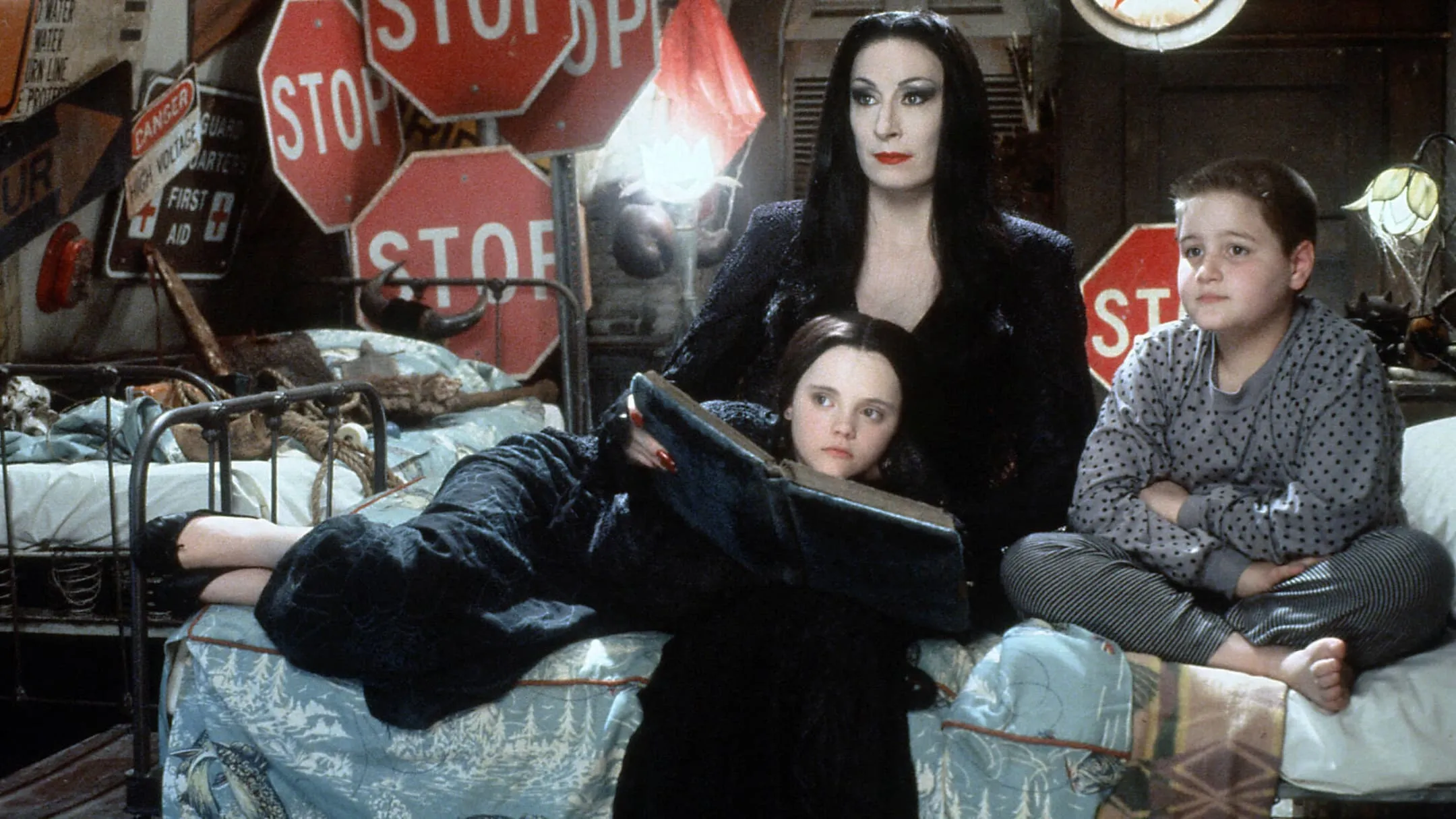As Princess Charlotte of Mecklenburg-Strelitz 1761 George III. having found her, she threw herself pleadingly "at her feet", which forced the king of England to take her in his arms, kiss her and lead her through the garden "through the streets". “Stairs leading to the palace,” as one observer put it. A few hours later, German Princess George married and became the new queen of England.
Charlotte was in poor health after a difficult sea voyage. She was so thin that she could barely support the weight of her diamond-encrusted wedding dress. As the art collector and author Horace Walpole wrote in a letter the next day: "Her cloak of purple velvet and ermine [was] so heavy that the spectators knew her upper half as well as the king himself" .
Despite these somewhat inauspicious beginnings, Charlotte and George enjoyed a loving and successful relationship that lasted until the King's mental illness violently altered the personality of him at the end of the decade 1780. A new spin-off of Netflix's popular historical drama "Bridgerton" revisits the royal couple's love story. The six-episode limited series titled "Queen Charlotte: A Bridgerton Story" stars India Amarteifio as the young queen and Corey Mylchreest as her husband.
Golda Rosheuvel, who played the elderly Queen Charlotte in "Bridgerton", reprising her role in a parallel story set in 1810. Today, these years are known as the Regency period, named after the window in which Charlotte's son , the future George IV, reigned as regent in place of his father, who Parliament deemed mentally incompetent.
Black Britons in “Bridgerton”

Like its sister series “Queen Charlotte,” the film takes considerable liberties with historical representation and portrays Charlotte as a black woman whose marriage opened doors for people of color in 18th-century England. ( Indeed, most historians reject the theory that Charlotte was black.) As black aristocrat Lady Agatha Danbury says in “Bridgerton,” “We were two distinct societies, divided by skin color, until a king became king ".lovers"
The new series expands on this fictional movement toward racial equality, explaining that George's mother, Princess Augusta, quickly granted titles to wealthy black families to create in it "the "Recreating the nobility." Photo [of new daughter-in-law],” as Alison Herman writes for Variety. The integration attempt, known as the “Great Experiment,” was not immediately successful. Herman notes: “There is some resistance from the old guard, though never explicitly racist, and once again calls for the continuation of the existing status quo."
Race relations in Georgian England were much more complicated than "Bridgerton " and "Queen Charlotte" suggest. According to Historic England, in the second half of the 18th century there were about 15,000 black people living in the country, most of whom worked as paid servants or slaves. Although Britain abolished the slave trade in 1807 (in largely due to the efforts of black abolitionists such as Ignatius Sancho and Olaudah Equiano), slavery remained legal in the British colonies until 1833 and was an exploitative practice in which slaves and recently freed adults were forced to labor. They remained apprentices for years until 1838.
"Bridgerton" is set in a time when "diversity as we know it didn't exist," historian Marlene Koenig told Insider's Mikhaila Friel and Ayomikun Adekaiyero. Although the show's producers and stars have portrayed the inclusion of black characters as a form of escapism and fantasy, the fact is that slavery not only exists in the world of "Bridgerton," but is also directly responsible for creating much of the wealth presented there.
"You can't say that race doesn't matter when the world these characters live in was created in part by racism," wrote critic Carolyn Hinds for the Observer. 2021. “Yes, there is slavery in this world. So why doesn't race matter? Black people walking in the background don't erase that, and that's not enough."
The debate over Charlotte's black origins
O A The The idea that Charlotte was black comes from the research of historian Mario de Valdés y Cocom who, writing for PBS Frontline in 1997, claimed that Charlotte was a "direct descendant" of Margarita de Castro y Sousa, a 15th-century Portuguese noblewoman who married The 13th-century ruler Alfonso III and his Moorish lover Madragana. Valdés also pointed to "the African facial features visible in many portraits of the queen" as evidence for his theory, noting that "artists of the time were expected to downplay , attenuate or even erase a person's facial features, especially that of a woman." , which were thought not to meet the beauty standards of the time."
Other researchers are skeptical of Valdés' claims. As historian Lisa Hilton told Insider's Yoonji Han last year, the term "Moor" referred to anyone living in the Arab empire, regardless of race. Although Madragana was a black woman, Hilton added: "It is extremely unlikely that, after 500 years, traces of genetic predisposition would have appeared in the facial features of an 18th-century princess." In other words, as Stuart Jeffries said for The Guardian in 2009: "[Historians] argue that the generational difference between Charlotte and her supposed African ancestor is so great as to render the hypothesis laughable."
Although Charlotte was probably not black, this does not mean that the aristocracy was entirely white. Dido Elizabeth Belle, the mixed-race daughter of a slave and a Royal Navy captain, is widely considered Britain's first black aristocrat. Her father's uncle, the Earl of Mansfield, born in 1761, raised her with a white cousin on her luxurious London estate. By all accounts, Belle was treated like a member of the family, although she did not eat with the rest of the family when Massachusetts Governor Thomas Hutchinson came to her home for dinner in August 1779. "family," Hutchinson wrote in her journal "He calls her Dido, which is probably the only name she has. He knows he will be accused of showing affection to her."
A century later, Queen Victoria accepted to be the boy's godmother to Sarah Forbes Bonetta. She is a woman born to a prominent Yoruba family. In the late 1840s, King Ghezo of Dahomey (last appearing on the big screen in The Woman King) defeated Bonetta's tribe, killing her parents and enslaving them. In 1850, after a British captain failed to convince Ghezo to abandon his role in the slave trade, the king gave him Bonetta as consolation. When the couple arrived in England, Victoria agreed to take the young girl "under her wing" as her protector, paying for her education and caring for her all her life, she said. historian Caroline Bressey wrote in a 2005 article.
George and Charlotte’s relationship
Charlotte was born on May 19, 1744, the youngest daughter of the Duke of Mecklenburg-Strelitz, a region in what is now northern Germany. When she Charlotte was 17, the new king of England, 22-year-old George III, asked her to marry him. According to Catherine Curzon of History Extra, George "desperately needed a queen and an heir," so he chose Charlotte from a "short list of fit and proper Protestant women." She was not a traditional beauty, but she had a "lively but balanced temperament", as one contemporary put it.
Charlotte landed in England on 8 September 1761. . and she married George the same night, six hours after her arrival. Two weeks later, the couple held a joint coronation; This lasted so long that parishioners began to eat during the sermon. A year after the wedding, Charlotte gave birth to the future George IV, the first of the couple's 15 children, 13 of whom lived to adulthood.
Ditto even though she was married, Charlotte and George were more interested in political gain than love and thought highly of each other. In a letter to her husband in 1778, the Queen wrote:
Your travels will benefit you by giving spirit to all bodies and thus making the best . known world and, if possible, most loved by people in general. It has to be that way, but it doesn't compare to the love he feels for his loving friend and wife, Charlotte.
Charlotte and Jorge. They were very committed to the education of their children. While George is often remembered for his mental illness and his role in the Revolutionary War, “he was also a man capable of great empathy,” historian James P. Ambuske told Sara Georgini of Smithsonian Magazine in 2016. “He was very worried. ". Every parent would be concerned about the well-being of their children and their education. He was fully aware that he was creating potential future leaders, but he also wanted them to be good people."
The King and Queen shared a love of music, often playing as a duet, with Charlotte on the harpsichord and George on the flute. Although they both preferred the simple, informal life they led at home, the court they presided over (as seen in "The Bridgerton Chronicles") was elegant and glittering. div>< div>
George suffered his first serious attack of mental illness in 1788. The king suffered both physical pain and mental anguish, including periods of "incessant talking" during which he talked until he was foaming at the mouth. Unable to sleep, he spoke out of turn, accused his wife of adultery and made inappropriate advances on his assistants. On one occasion, George even physically attacked his eldest son, George, Prince of Wales.
Doctors had little explanation for the sudden deterioration in health by George. . (In the 1960s, some historians attributed his behavior to a genetic blood disorder called porphyria. However, more recent analysis suggests that he suffered from bipolar disorder.) Dr. Francis Willis, central character in The Madness of King George, 1994, George dealt with a combination of harsh methods such as coercion and physical restraint, as well as more humane strategies. “The king probably recovered within months, despite the treatment (which included leeches and cold baths), rather than because of it,” says the Historic Royal Palaces website.
George's illness also affected his wife and children. As the writer and legal scholar Fanny Burney noted in her diary, Charlotte repeatedly asked, "What will become of me?" Her “discouraged” words “contained very complex fears,” Burney wrote. In 1789, Charlotte's hair turned white due to stress. He came into conflict with Prince George when he announced himself as regent in his father's place, and was not reconciled with his son until 1791, when the king was restored.
George's recovery was not permanent. He continued to suffer periodically from mental illness, and in 1811 his son officially took control of the kingdom, serving as regent for the next nine years. During this reign, Carlota presided over the court in place of her son's ex-wife, Carolina de Brunswick. She cared for the king faithfully, but she was careful never to be alone with him. As Curzon writes: "Charlotte watched him disappear until she no longer recognized her." The Queen died of pneumonia in 1818, aged 74, two years before her husband. They are buried side by side in the royal crypt at Windsor Castle.
Reflecting on the loss suffered by Charlotte, wife of Philip Lybbe Poyse, who attends the couple's coronation during his procession in 1761 he remarked: "No one ever felt more sorry than His Majesty, for no couple were happier than before this greatest of all misfortunes."












